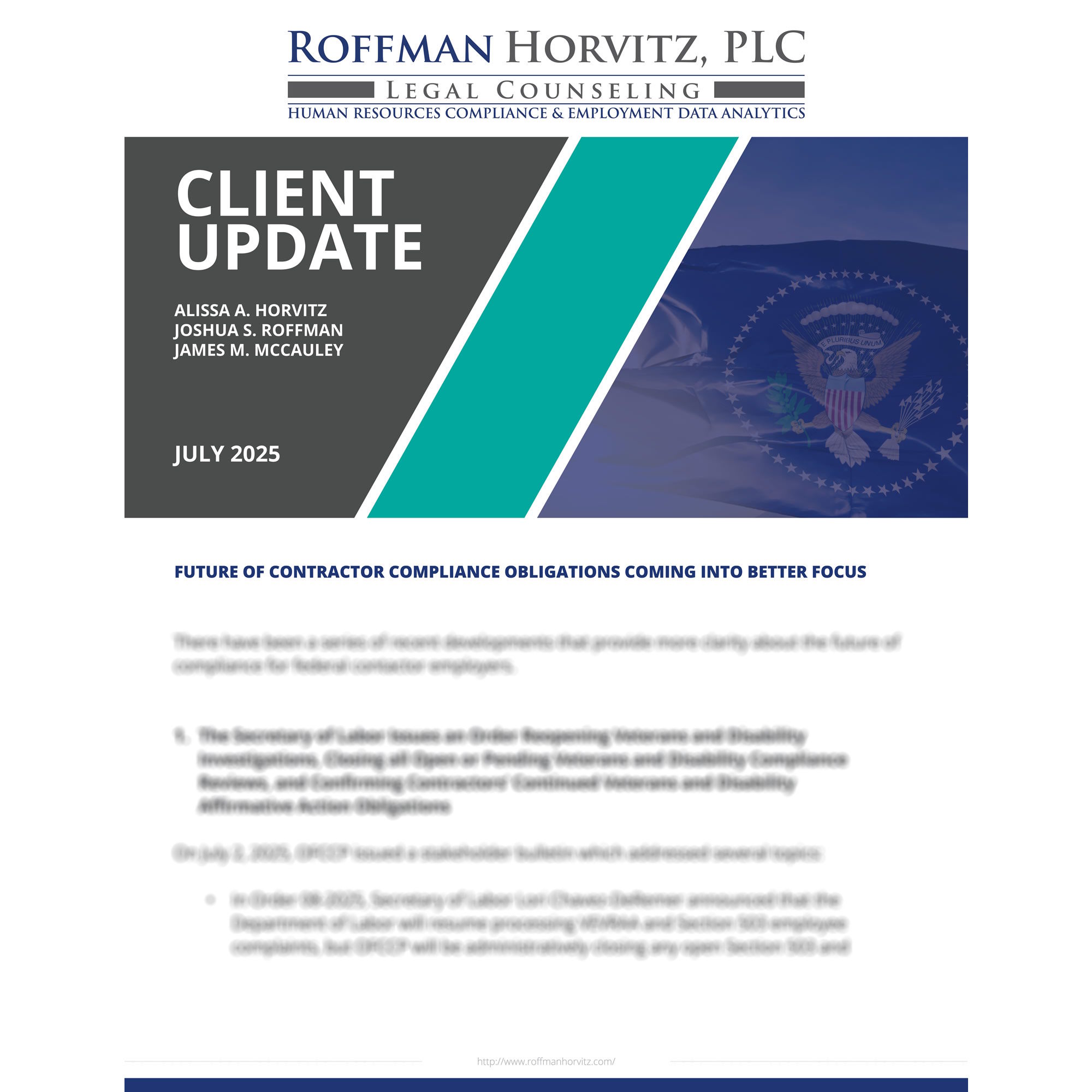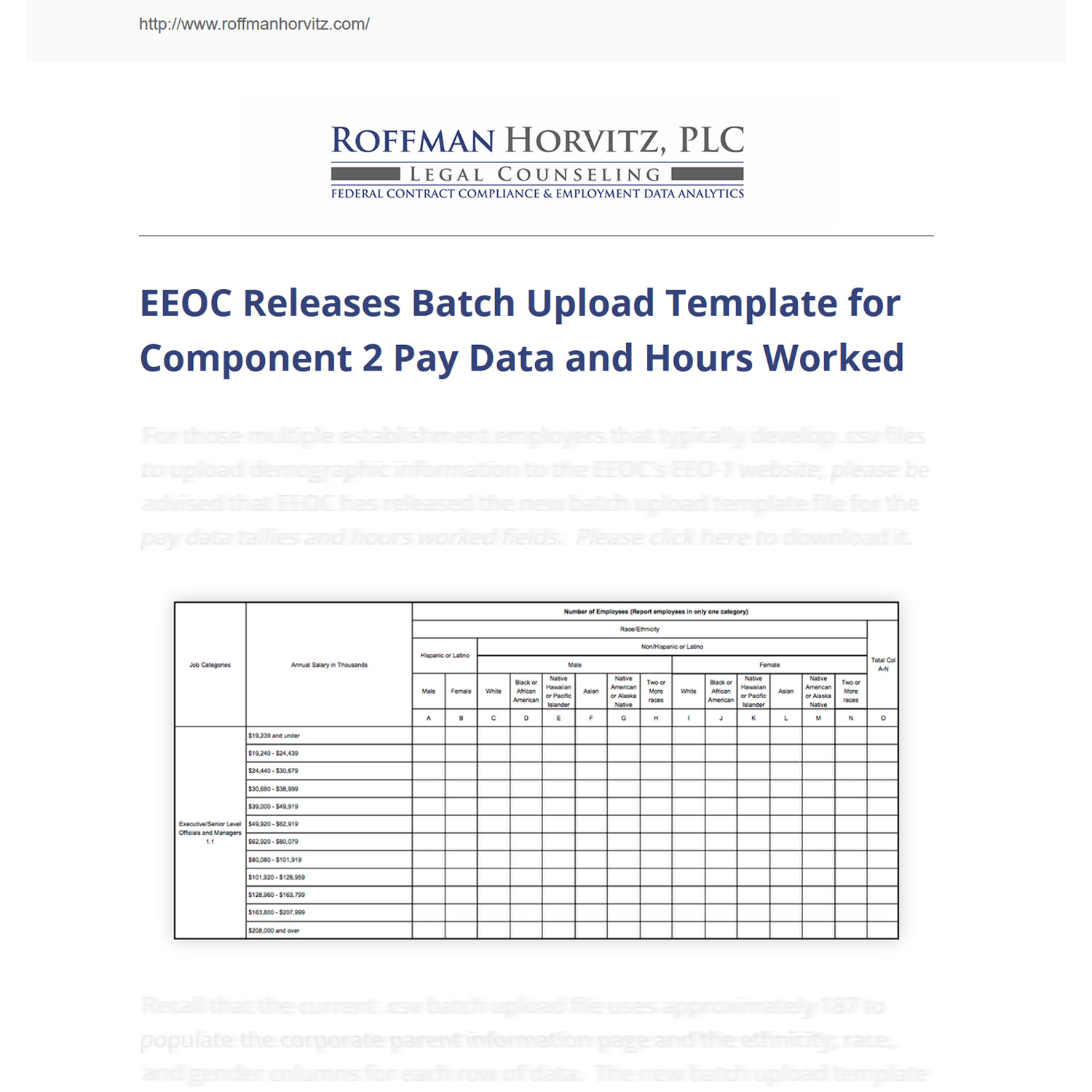Preparing for the 2023 EEO-1 Data filing: UNAVAILABLE versus a Unique Entity Identifier (UEI)

Preparing for the 2023 EEO-1 Data filing: UNAVAILABLE versus a Unique Entity Identifier (UEI)
EEOC made several changes in the 2022 EEO-1 report, one of which was to request a System for Award Management (SAM) Unique Entity Identifier (UEI) rather than DUNS number from government contractors. The UEI field was a required field for federal contractors to complete; federal contractors and subcontractors could not leave it blank. Organizations that had already registered in SAM most likely could locate their UEI in the SAM entity profile for the organization, but many other EEO-1 filers that identify as federal contractors and subcontractors did not have UEI numbers at all, or had UEI’s for their parent and HQ and not for subsidiaries, and so forth. For the 2022 data reporting year, EEOC’s guidance broadly instructed filers to enter UNAVAILABLE instead of a UEI if the filer did not have a UEI or was unsure of which UEI to use since the 2022 report was requesting the identifier for the first time. See EEOC’s 2022 EEO-1 Component One Data Collection, FAQs, Volume 2, Section O on pages 15-21.
Because
- EEOC may have a greater expectation for the 2023 filing that government contractors and subcontractors know their UEIs and enter them in the applicable reports,
- OFCCP proposed in December 2023 to update the Contractor Certification Portal to collect UEI1, and
- A UEI may be required for the 2024 VETS-4212 filing,
we wanted to raise this topic, now.
IMPORTANT: The EEOC has not issued new or formal guidance on UEIs for government contractors, and we cannot be certain that a UEI will be required in 2024 for the 2023 data upload instead of the word UNAVAILABLE. We also don’t know how quickly OFCCP will finalize its proposal to require the UEI in the 2024 certification cycle. We are trying to anticipate what might be required of government contractors and subcontractors later this year and to prompt you to start gathering some materials that might be needed to obtain the UEI.
What is a UEI?
On April 4, 2022, the federal government transitioned from using DUNS numbers to using Unique Entity IDs (UEIs) to identify entities that do business with the U.S. Government. UEIs are assigned to entities that have (a) registered or (b) created a profile in SAM.gov, and not every government contractor and subcontractor needs to “register.” Some organizations, as we explain below, may need to create a profile in SAM.gov to be assigned a UEI, even if they are not “registered” as government contractors. Organizations may have or need separate UEIs for different legal entities and/or locations.
What government contracting organizations should have a UEI?
Organizations that have or wish to bid on government contract opportunities must register in SAM and obtain a UEI2. The Federal Acquisition Regulations require offerors and quoters to be registered in SAM when an offer or quotation is submitted for a contracting opportunity, and the UEI must be included on the cover page of the offer or quote. There are several exceptions to the SAM registration and UEI requirement in FAR 4.1102(a) for certain contracts under the micro purchase threshold, certain contracts awarded and/or performed outside of the US, and urgent or national security-related contracts.
Other organizations, which are government contractors under OFCCP’s definition of a federal contractor, may need a UEI, but do not need to “register” in SAM. They need to create a profile. For example, first-tier subcontractors, banks, credit unions, and organizations selling to the Exchange (e.g., AAFES) would fall under OFCCP’s definition of a government contractor, but may not need to “register” in SAM.
Which federal subcontractors are required to register in SAM and have UEIs?
Certain first tier subcontractors with a subcontract of $30,000 or more must have a UEI. Prime federal contractors must report first tier subcontracts of $30,000 or more in the Federal Funding Accountability and Transparency Act Subaward Reporting System (FSRS). Prime contractors do not need to report subcontracts worth more than $30,000 if either the prime contractor or subcontractor had gross income in the previous tax year from all sources under $300,000, or if the prime contract was not required to be reported in FPDS.
Other organizations that do not intend to bid on prime contracts and only intend to subcontract with prime federal contractors can receive a UEI without registering the organization. Obtaining a UEI without registering requires validation of the organization’s legal name and business address but does not require additional information or completion of the core representations, assertions, and certifications.
What information will I need to have on hand to create a profile and obtain a UEI?
To get to SAM.gov, first you need to create a LOGIN.GOV account, if you don’t already have one.
https://www.login.gov/help/get-started/create-your-account/
Next, SAM.gov must first validate that your entity is true and existing before generating a Unique Entity Identifier (UEI). To receive a UEI in SAM.gov for each separate government contracting legal entity, you must validate the following for each separate legal entity:
- Your entity’s legal business name (KB0058175)
- Your entity’s physical address (KB0058176). A post office box or virtual address may not be used as your physical address.
- Your entity’s start year and/or State of Incorporation or establishment (KB0059235) (U.S entities only. This may not apply for certain entities)
If your entity information is not already found on SAM.gov, you will be required to provide (upload) documents to prove your entity information. More information about entity documentation can be viewed here (KB0055230). If your entity is incorporated, give the year of your incorporation. If your entity is not incorporated, provide the year of the date that your entity formally began doing business or was founded.
Because the process of obtaining these kinds of validation documents could take time, we wanted to raise this topic now to give government contractor organizations lead time to obtain a UEI. If you would like to read a guide regarding how to create a UEI, click here.
**
There is no deadline to obtain a UEI; we do not know when EEOC will open the portal in 2024 to receive the data for the 2023 filing period; and we do not know whether OFCCP will require it in 2024 in its contractor portal. But in anticipation that the UEI will be needed, and given the number of clients that we believe wrote in UNAVAILABLE in the 2022 filing season, we wanted to try to get ahead of this, now.
If your organization would like to assess whether it needs a UEI, please contact the attorneys at Roffman Horvitz.
1 At the present time, construction contractors are not required to certify in OFCCP’s Contractor Portal, but they file EEO-1s and VETS-4212s, if certain jurisdictional thresholds are met.
2 OFCCP’s jurisdiction over federal contractors and subcontractors does not extend to grant recipients, but institutions that contract with the federal government and receive grant funds may already have a UEI because they registered in order to receive grant funds.
Supporting Documents
- 2022 EEO-1 Component 1 Additional FAQs – Volume 2
- What documentation do I need to validate my entity? - Entity Validation Document Requirements
- What documentation do I need to validate my entity? - Can I Use this Document for Entity Validation?
- What documentation do I need to validate my entity? - Examples of Acceptable and Unacceptable Documents

